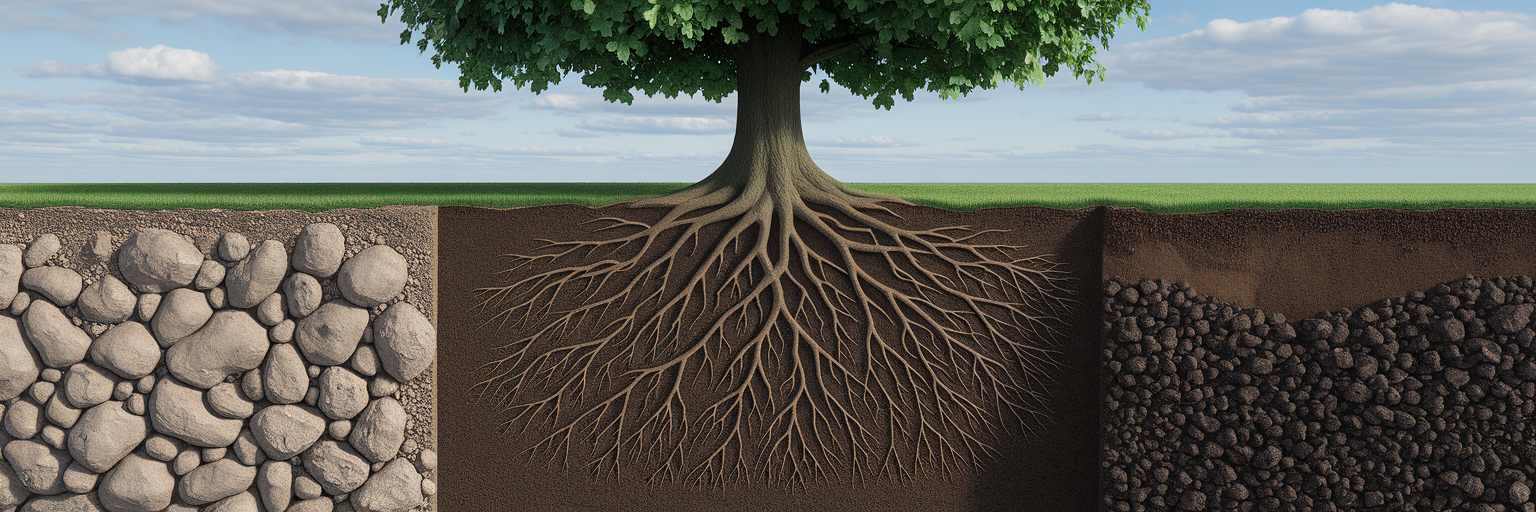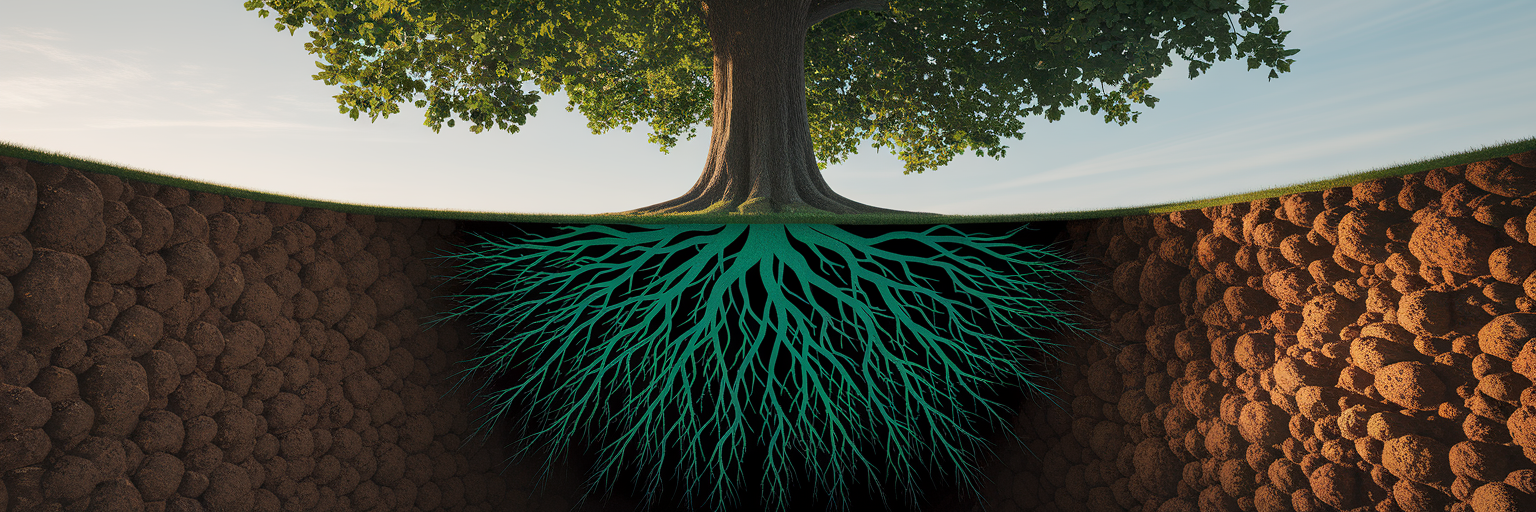The Foundation of Tree Vitality in Your Garden
The health of a tree is written in the ground it grows in. Here in San Antonio, our landscape sits atop a foundation of limestone, which directly shapes the soil in our gardens. This geological fact presents specific challenges that many homeowners might overlook when caring for their trees. We often focus on what we can see, like wilting leaves or sparse branches, without considering the root of the problem lies beneath the surface.
This guide is designed to help you look deeper. Understanding your soil is the first step in effective tree care in San Antonio. By diagnosing the foundational issues in your yard, you can make informed decisions that support strong, resilient trees. Proper soil management is not just about horticulture; it is about protecting the beauty and safety of your property for years to come. For more insights from our experts, you can explore the topics on our blog.
Identifying Your Property’s Soil Type
Before you can improve your soil, you need to know what you are working with. Most properties in our area feature one of two dominant San Antonio soil types, each with its own distinct personality. The first is the heavy clay soil many locals refer to as ‘gumbo.’ When wet, it feels dense and sticky, and as it dries, it can shrink and crack like hardened pottery. For trees, this density is a major hurdle. It leads to poor drainage, leaving roots sitting in water and starving them of the oxygen they need to breathe.
On the other end of the spectrum is sandy loam soil. This type feels gritty and loose, even when moist. Its primary drawback is the opposite of clay. Water and essential nutrients drain through it so quickly that tree roots struggle to absorb them before they are gone. This often leads to drought stress, even with regular watering. A great way to get a sense of your soil is a simple feel test. Grab a handful of moist soil and squeeze it. If it forms a slick, dense ball that holds its shape, you likely have clay. If it feels gritty and crumbles apart easily, you are dealing with sandy soil. As noted in the Garden Style San Antonio soil guide, recognizing these textures is key to proper plant management.
| Characteristic | Heavy Clay Soil (‘Gumbo’) | Sandy Loam Soil |
|---|---|---|
| Texture | Fine particles, sticky when wet, hard when dry | Gritty, coarse, and loose |
| Water Drainage | Very slow; prone to waterlogging | Very fast; prone to drying out |
| Nutrient Retention | High, but can ‘lock’ nutrients | Low; nutrients leach out easily |
| Primary Challenge for Trees | Root suffocation, compaction, poor aeration | Drought stress, nutrient deficiency |
The Hidden Challenge of Alkaline Soil
Beyond the physical texture we just discussed, there is a chemical characteristic of our local soil that creates significant alkaline soil tree problems. The term ‘alkaline’ simply means the soil has a high pH, a natural condition in the San Antonio area due to the underlying limestone. This high pH creates a frustrating issue for trees known as nutrient lockout. Think of it like a fully stocked pantry with a locked door. The nutrients your tree needs, especially iron, are abundant in the soil, but the alkalinity prevents the roots from being able to absorb them.
This chemical imbalance produces a very specific visual symptom called iron chlorosis. Have you ever noticed a tree with leaves that have turned a pale yellow, while the veins strangely remain a vibrant green? That is a classic sign of iron deficiency caused by alkaline soil. It is a direct signal that your tree is struggling to access essential nutrients. While these symptoms are strong clues, the only definitive way to understand your soil’s chemistry is through professional soil testing for trees. A proper test reveals the exact pH level and identifies specific nutrient deficiencies, which is critical for creating an effective treatment plan for the trees on your property, a core part of the residential services we provide.
Practical Steps for Soil Improvement
Once you understand your soil’s texture and chemistry, you can take practical steps to improve it. The most beneficial action for any soil type is adding organic matter. Spreading a layer of quality compost or mulch does two things. For heavy clay, it helps break up the dense particles, improving drainage and aeration. For sandy soil, it acts like a sponge, helping retain moisture and nutrients. This is a fundamental step in learning how to improve clay soil for trees and sandy soil alike.
To address alkalinity, you can amend the soil with materials like elemental sulfur or specialized acidifying fertilizers. These products work to gradually lower the soil’s pH, making locked-up nutrients available again. For more compacted soils, advanced techniques may be necessary. Core aeration, for instance, involves removing small plugs of soil to relieve compaction and allow oxygen and water to penetrate the root zone. For trees showing significant stress, deep root fertilization is a highly effective solution. This professional treatment involves injecting a balanced blend of nutrients directly into the root zone, bypassing the nutrient lockout issue at the surface entirely. As the CPS Energy tree guide suggests, targeted care ensures trees receive what they need to thrive. These methods work hand-in-hand with implementing an effective tree watering system for long-term health.
Matching Trees and Water to Your Soil
Ultimately, long-term success comes from working with your environment, not against it. This starts with the ‘right plant, right place’ principle. When selecting new trees, choose species that are native or well-adapted to our region. Some of the best trees for San Antonio soil include the Texas Red Oak, Cedar Elm, and Anacacho Orchid Tree, as they are naturally tolerant of alkaline conditions. It is equally important to avoid plants like azaleas or gardenias that require acidic soil to flourish.
Your watering strategy should also be tailored to your soil type:
- For Clay Soil: Water deeply but infrequently. This encourages deep root growth and allows the soil to partially dry between sessions, preventing root rot.
- For Sandy Soil: Water more often but with less volume each time. This provides consistent moisture without washing away valuable nutrients.
Tree care is an ongoing conversation with your landscape. By observing your trees and understanding your soil, you can provide the support they need. For a tailored, long-term care plan, a professional assessment can make all the difference. If you would like an expert to evaluate your property, please contact us for an assessment.






